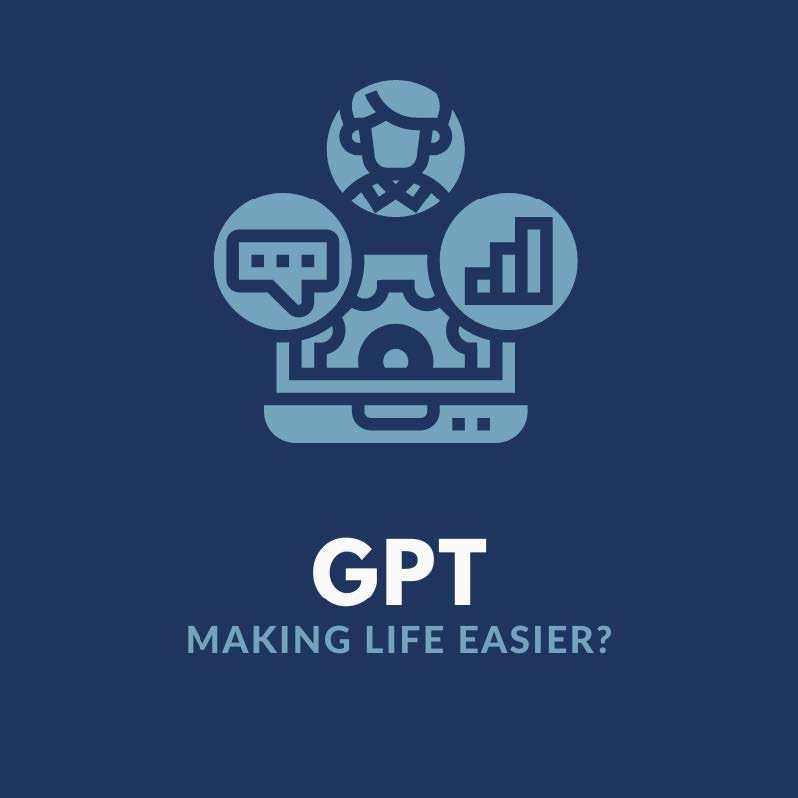In today’s world, Large Language Models (LLMs) and Generative Pre-Trained Transformers (GPTs) are all the rage. Whether one thinks it’s pretty cool or powerful or problematic, it is hard to escape a conversation about AI. No matter your position, it is safe to say that in this rapidly changing technological landscape, businesses or institutions or even individuals that do not embrace AI face the risk of getting left behind, as being responsive and adaptive to change is key to survival.
What is an LLM anyway?
A Large Language Model (LLM for short) is a complex algorithm that has consumed massive amounts of data to learn and understand the patterns and connections between phrases and words. It then uses this knowledge to summarize, generate and even predict new content. If you are thinking “well, that sounds like a human”, then you are not wrong! Imagine if Shakespeare had a digital twin who could write in any style, from sonnets to modern slang. That’s an LLM for you!

So, what is a GPT then?
A Generative Pre-Trained Transformer (GPT) is nothing but a type of LLM – one of the most well-known. It is the “GPT” in ChatGPT, the AI-based chatbot that is currently the internet’s most favorite topic.

What does this mean in the context of higher ed tech.. like a CRM?
Several CRMs (Constituent Relationship Management) have already started integrating NLP (Natural Language Processing) capabilities into their platform. At the Slate Summit 2023, Alexander Clark, the founder and CEO of Technolutions announced the following potential AI-based features in Slate.
- Reply Bots: This was a feature that was available in other SMS tools but was lacking in Slate – until now. With reply bots, you can define the actions that the bot should take based on a particular response from a prospective/current student. You can also trigger other reply bots from a bot.
As an example, you can send a text to your prospective students informing them about an upcoming event and ask them to respond with “RSVP” if they are interested in attending the event. On the backend, you can set up a bot to automatically register them for that event if they replied with “RSVP”.
Interactive messaging is going to vastly improve how you communicate and engage with your prospective and current students!
- Quicker Query: With this feature, when end users ask Slate to create a query for them, it will!
For example, you can tell Slate that you would like to see a list of prospective students from Georgia, who live within 200 miles of the University of Georgia and are interested in the Business program, and it is going to get this query started for you.
Quicker queries will be rolled out on a few of the main Configurable Joins bases before being expanded to others.
- Discovery/Support: The new service model mentioned during the Slate Summit includes resources from the knowledge base and Community Forums embedded into every page in Slate to guide users to the right answers for their unique questions and situations.
- First Draft: Feeling stuck while trying to create your email or SMS content? First Draft is here to help. Give it a prompt, and it will generate institutional context-aware text that you can then insert into your messages and build upon further.
- First Draft Dashboards: Slate is taking First Draft and generative text a step further to help users create a first draft of a dashboard. You can dynamically prompt the tool; have it use liquid markup and merge fields to create a dashboard that is relevant and specific to any constituent type in your database.
- Pre-Reader: This upcoming component is going to provide the reviewers with a summary of the application documents like essays, recommendation letters, and even transcripts. Want to quickly see grades only from the applicant’s STEM courses? Ask the Slate pre-reader!
As we noted, Slate is not the only CRM to incorporate chatbot or conversational AI components. Salesforce has launched Einstein GPT with many advanced capabilities including responding to customer queries in a conversational manner, generating communication content, automation of knowledge article creation, creation of case wrap-up summaries etc.
Similarly, HubSpot has introduced content assistant and ChatSpot.ai which are tools powered by AI. Content assistant, as the name suggests, is meant to help marketing and sales teams with content creation while ChatSpot.ai helps users perform tasks by giving detailed instructions on things like contacts and reports creation, HubSpot data summarization, message drafting etc.
Element451’s Bolt CoPilot is an AI content generator and copywriting tool that will allow users to draft communications and summarize chat conversation, while BoltBot is a conversational chatbot that is meant to provide 24/7 SMS and web messenger assistance to students.
Other platforms like Zendesk, Microsoft Dynamics 365 and more have already employed or are on their way to employing language model components, and it will be interesting to see how AI-based technologies continue to evolve and impact how we do things today.

This sounds exciting and like it will make my life better, but what’s the catch?
While these AI-based tools in CRMs can offer valuable capabilities, they also come with certain dangers and considerations for users. One major pitfall is the potential for generating inaccurate or misleading information. The LLMs rely on the data used to train them, which can sometimes be incomplete or incorrect or biased. Additionally, the results delivered by these tools are only as good as the prompts used to generate these outcomes. Lack of user understanding of these risks can lead to over-reliance or misinterpretation of the AI-generated output. Therefore, CRM end users must exercise critical thinking and verify any type of generated content using reliable sources or human expertise. We must employ AI-based tools as aids rather than sole decision-making instruments.
Any technology with immense potential comes with a plethora of problems that, when left unchecked, can result in a world of chaos. Ongoing awareness and audit of AI systems, conversations and policies surrounding data privacy, CRM governance, user training, addressing algorithmic bias while promoting diversity and inclusion in the data, and maintaining transparency in the use of AI are now more important than ever. After all, with great power comes great responsibility! By employing AI ethically and responsibly, higher education institutions can harness the power of technology to improve student experiences, support academic success, and foster a thriving educational ecosystem.

